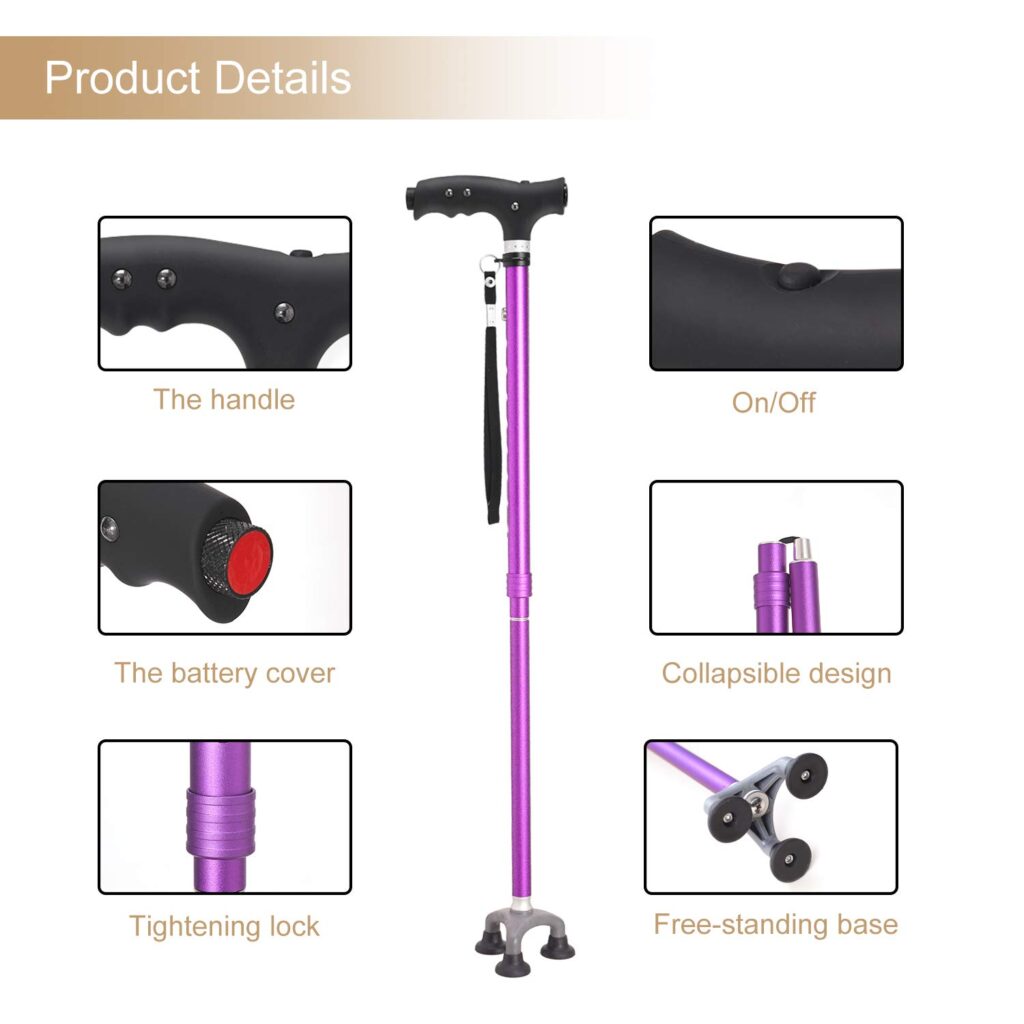How to use a walking cane for hiking on different types of terrain, such as rocky or muddy trails?
Using a walking cane for hiking can provide hikers with extra support and stability on the trail. However, the terrain can vary greatly, and it’s important to know how to use your walking cane effectively on different types of terrain. Here are some tips on how to use a walking cane for hiking on different types of terrain
Rocky terrain
When hiking on rocky terrain, it’s important to use your walking cane to maintain balance and stability. To do this, place the walking cane on the ground parallel to your foot, making sure the tip of the cane is secure in the crevices of the rocks. Then, step forward with your foot, using the walking cane for support. Repeat this process with each step, making sure the walking cane is secure before taking each step.
Muddy terrain
Hiking on muddy terrain can be challenging, as it can be slippery and unstable. To use your walking cane effectively on muddy terrain, place the tip of the cane on the ground and press down on it to check for stability before stepping forward. This can help prevent slips and falls. Additionally, consider using a rubber tip on the end of your walking cane, as this can provide better grip on slippery surfaces.

Uphill terrain
When hiking uphill, it’s important to adjust the height of your walking cane to provide the most support. Shorten the walking cane to provide more support to your upper body, and take smaller steps to maintain balance. Place the walking cane on the ground slightly ahead of your foot and use it to push yourself up the hill with each step.
Downhill terrain
Hiking downhill can be challenging, as it can put a lot of strain on your knees and lower back. To use your walking cane effectively on downhill terrain, lengthen the walking cane to provide more support to your lower body. Take shorter steps and place the walking cane on the ground ahead of your foot to provide extra support and stability. Make sure to lean forward slightly to reduce the amount of pressure on your knees.
Uneven terrain
Hiking on uneven terrain can be tricky, as it can be difficult to maintain balance. To use your walking cane effectively on uneven terrain, place the walking cane on the ground ahead of your foot and use it to test the stability of the ground before stepping forward. Take small steps and move slowly to maintain balance and avoid slips and falls.
Uses of walking cane
The function of the cane is to increase the supporting surface when walking: to reduce the load that the lower limbs or the body’s bone structure must bear. Generally, using the cane with the unaffected hand can reduce the weight of the affected lower limb by 20% to 25%. It can share the load of the patient’s foot and reduce the claudication caused by muscle weakness of the lower limbs, such as patients with degenerative arthritis. For patients with above-knee amputations, using a cane to increase the moment arm of the patient’s load can reduce the reaction force between the residual limb and the prosthetic limb. Reduce the muscle strength required when walking and turning. For patients with peripheral vascular disease, it can reduce the pressure on the blood circulation of the lower extremities.
Overall, using a walking cane for hiking on different types of terrain requires careful consideration of factors such as height adjustment, grip, and tip type. By using your walking cane effectively, you can improve your posture and balance on the trail, reduce the risk of injury, and enjoy a safer and more comfortable hiking experience.